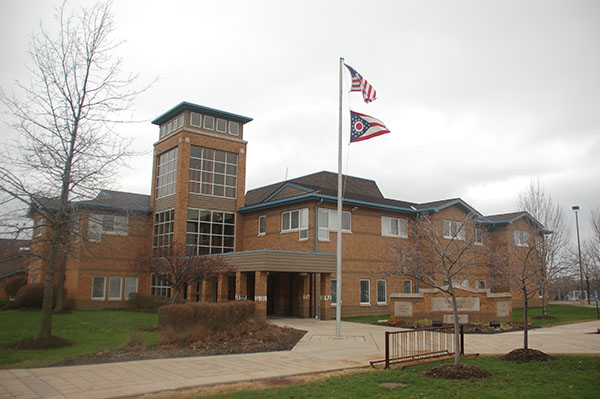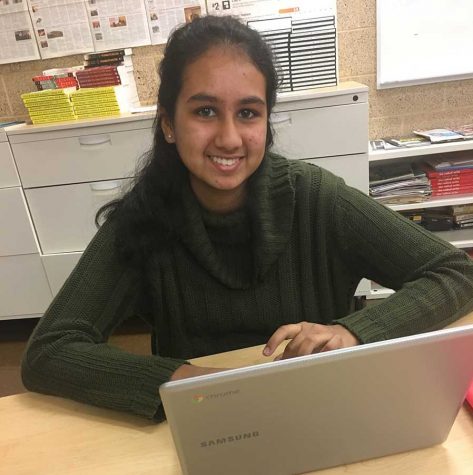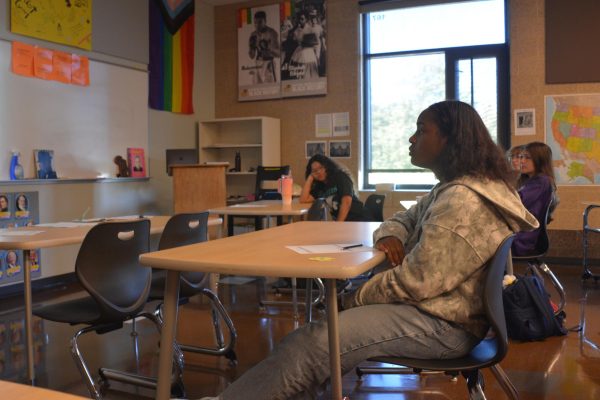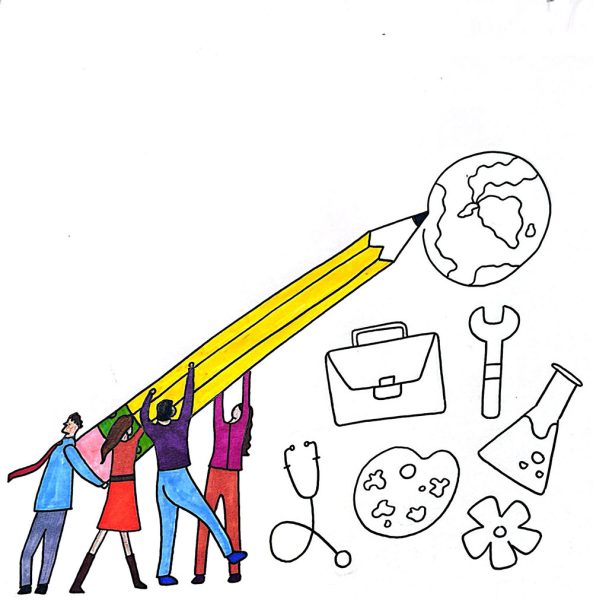District Tackles Equity and Engagement

After the preschool moves to Bryden, Hardis and Walsh see the Fairmount building as a space to be shared with the community.
The Beachwood School District launched equity and engagement teams this year to increase equity across the school district.
Beachwood’s Director of Equity and Engagement Kevin Houchins began holding these meetings on a monthly basis earlier in the year.
Due to the Covid 19 quarantine, the meetings will be held virtually beginning this month.
The equity and engagement teams consist of groups of teachers, parents and students.
“[Prior to the quarantine,] parent meetings took place in the high school community room, student groups met in [their] buildings and teachers have met collectively in the high school community room and in their respective building,” Houchins wrote in an email.
Houchins further explained the purpose of the teams.
“…[What] we have heard throughout the district is that people don’t feel like there was adequate input from the stakeholders in the community,” he said. “And so the purpose of the equity and engagement teams is [to] bring in the community to give us insight.”
“…[The] thought was let’s just bring everybody to the table so we can actually talk to each other and see what happens from there,” he added.
The official goals for the teams are outlined below:
- Two-way communication between the Board of Education, district administration and stakeholders.
- Strengthen relationships (build connections) between various affinity groups to gain understanding.
- Create a district culture of inclusion.
- Proactively identify barriers to inclusion.
- Encourage the development of informal support groups of various districts and building affinity groups.
Houchins explained that there are three teams for each school building: a teacher team, a parent team and a student team. However, due to the age of the students, Bryden does not have a student team.
Each team consists of people from various backgrounds in order to achieve a diverse representation of opinions.
“A representative from each of these teams will [participate in the] equity and engagement committee that will meet once every three months,” Houchins said.
The equity and engagement committee also includes Houchins, a building secretary, a building administrator, a school counselor, a school psychologist and may also include another person — such as a college admissions representative for the high school.
Each team consists of people from a range of backgrounds.
“Because this is a diverse group of people who represent multiple different things — not just racially, but…thought, religion, gender identity, all different types of things…we felt like this was a good mix of stakeholders within the district to give us input…” Houchins explained. “And so that helps us make informed decisions as opposed to…just based on the [perspective of] administrative staff…”
“The selection of all groups was a collaborative effort between building and district administrators,” he added in an email.
Houchins added that he is open to feedback and adjustments.
“To be honest with you, initially… we weren’t going to have a Hilltop student team, but then as I started going into the building, I found that these kids are sharp, that they know what they want,” he said. “And so we added that, so for me [the teams will] always be fluid, and will adapt to what people need as I listen to feedback.”
Houchins explained that the teams worked with Dr. Jennifer Eberhardt, who organized listening sessions with the teams to understand what parents, students and teachers wanted to improve. The parent team worked with Eberhardt on Feb. 5, and students and teachers worked with her on Feb. 6 and 7.
“There were things that [parents and students] wanted us to do as a district, and those are things that we’re going to tackle…” Houchins said. “…[F]or example: curriculum. The kids feel as though they don’t see themselves in the curriculum, and their parents are hearing it from their kids…so therefore that’s an issue that we’ll tackle.”
Junior Carrington Peavy is a member of the high school student team and explained what has been addressed at those meetings.
“We talk about school policy, and we talk about different problems in the school…and what we think we can do about them,” she said. “…[for instance…] racial policy. In sports, we’ve had incidents where people [make] racial slurs [in exchanges] and also about different things that happen in school, like social media policies.”
Houchins added that the teams offer a way for people to interact with and learn from each other.
“…Most of the people in the teams don’t know each other,” Houchins said. “So now that they’re actually sitting down and having conversations, they’re intrigued by what they’re learning, and that’s a beautiful thing, and that’s what makes me really excited: to see people sit at the table and learn from each other.”
“[W]e have so many different representatives in these groups that it provides us with a perspective that we wouldn’t normally have…”
In addition to the equity and engagement teams, the district has taken a number of other steps this year to promote inclusivity.
Beachwood students also attended the Diversity Center’s spring conference, “Social Justice: Youth Voices and Social Change,” held at John Carroll University on March 6.
At the conference, students participated in team-building activities and discussed leadership and the power of their voices.
Another initiative to help promote equity is the Bison ACT Roadmap. Houchins explained that this project helps ensure that all students have equal access to ACT services.
“…[Not all students] have the resources to pay for ACT tutoring,” Houchins said. “And so the school has committed a third of the cost [of the ACT services provided in the school]…because our commitment is to make sure there’s equal access for everybody, and…[this] provides equity for students who can’t afford to do it.”
“…[W]e’re hoping that [this ACT program] really will balance things out for all kids and give them the skills necessary to help them attain those scores,” he continued. “Now once they attain those scores, those scores translate into…money, because [that’s how students can qualify for] merit-based scholarships.”
Another initiative is the introduction of affinity groups where students have the space to get support and talk.
“…[E]veryone needs safe spaces where they feel that they can talk and get support, Houchins said. “And so no matter where you’re from – your background, your economic status, your race, your religion, your identity – we need to have spaces where people feel like they get support.”
Amnesty International and the student health and wellness committee has also been active in encouraging inclusion in the community.
“Amnesty International has been working really hard on two things this year,” sophomore Greg Perryman wrote. “…One being getting the Voice podcast off the ground with the Beachcomber as a means to share diverse voices,”
“We have also been doing research on study skills and how Beachwood can improve on empowering people with the necessary study skills,” he added. “We are looking at the data specifically from the perspective of knocking down barriers that perpetuate the achievement gap and hope to deliver our results and recommendations in the near future.”
“[I]n the Student Health and Wellness committee, the new freshman mentorship program we are initiating for the coming school year – while [focusing] on mental and social wellness – [is interconnected] with diversity and inclusion,” Perryman wrote.
Houchins encourages people to interact with different kinds of people and get to know each other.
“Try to engage with different people, even though it’s awkward and uncomfortable at times…when there are opportunities to work in groups – whether it be in the classroom for a class project…take those opportunities to work with different people and learn from them,” he said. “…[W]hat I’ve noticed in our groups is that people have found connecting points. As different as they may feel they are, they can find a connecting point somewhere. But that only happens through engagement, through actual deep levels of conversations.”
“You’re way deeper than just your appearance…dig deeper to find out more about people…[and] express yourselves,” he added. “…[I]n my classroom that was one of the things I really [hoped] for kids to do. I [tried] to help them find their voices.”
“Most of my fellow students don’t believe they have any power to affect policy, but students have been the ones daring to push the envelope farther and faster, and I look forward to continuing that legacy,” Perryman wrote.
“…[Y]ou just have to be willing to take that extra step of commitment to no longer be passive spectators. Share your perspective and story,” he added. “It will almost surely encourage someone else to do the same.”

Prerna Mukherjee has been writing for The Beachcomber since the fall of 2016. She covers a variety of school and community events. In her free time, Prerna...



![“My parents have always said that education is important. My parents are Chinese immigrants, I'm Chinese American, [and that's a] value that has always been ingrained in our community,” said Senior Lyndia Zheng, pictured with Tony Zheng](https://bcomber.org/wp-content/uploads/2025/10/DSC_4244-600x400.jpg)





